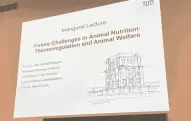Shortage of 400,000 Workers Expected in Bavaria by 2035
 A new study has revealed that Bavaria will face a shortage of 400,000 workers by the year 2035, according to recent findings. However, the city of Munich is defying this trend, witnessing a notable increase in its workforce numbers. A distinct north-south divide is evident when studying the statistical landscape.
A new study has revealed that Bavaria will face a shortage of 400,000 workers by the year 2035, according to recent findings. However, the city of Munich is defying this trend, witnessing a notable increase in its workforce numbers. A distinct north-south divide is evident when studying the statistical landscape.
Johannes Winklhofer, CEO and majority shareholder of the family-owned company Iwis, dismisses the notion of lamenting over labor and skilled workforce shortages. "We can transform poorly qualified secondary school students into exceptional employees. As an industrial enterprise, this is an achievable feat," asserts Winklhofer, highlighting his concerns over companies' complaints about subpar students and limited personnel. Iwis employs over 3,200 individuals globally, with 550 based in Munich.
While securing physicists, mathematicians, or engineers may have been easier for Iwis in the past, the company has adapted to the evolving landscape. "During the summer, we were in search of an IT manager with global responsibilities, and we received over 150 applications from across Europe," reveals Winklhofer. "I was pleasantly surprised by how well the process went."
Professionals in the field of Information and Communication Technology (ICT), including computer scientists, are currently in high demand, posing a challenge in recruitment. However, this scenario is projected to change by 2035, with a small surplus in this domain. This unexpected revelation comes from a Prognos study commissioned by the Association of the Bavarian Economy (vbw). Published as a web magazine, the report, titled "Regional Labor Landscapes," marks over a decade of data analysis. For the first time, the study delves into the employment landscape of individual districts and independent cities in Bavaria.
Bertram Brossardt, CEO of vbw, notes, "The shortage of skilled workers persists, but the decline in the labor supply is less significant compared to our previous study." The projected decrease in Bavaria's workforce by 2035 stands at approximately 400,000 individuals, reducing from 6.6 million to 6.2 million. A year ago, the economic association feared a shrinkage of 700,000 skilled workers. The improvement is largely attributed to the inclusion of refugees in Germany's population statistics.
According to forecasts, the demand for labor will also decrease, albeit to a lesser extent than the supply. Consequently, a deficit remains. The overall supply of labor and skilled workers is anticipated to drop by 5.2% by 2035. Significant regional variations exist, with Munich topping the list with a 2.2% growth compared to 2022. On the other end, Kronach experiences the most substantial decline at 20.7%. A clear north-south divide is discernible on the map, with Franconia and the Upper Palatinate facing a particularly challenging situation in rural areas.
Businesses can find solace in the fact that metropolitan areas are expected to maintain a relatively favorable job market. This is especially true for Munich - both the city and its surrounding district - as well as Augsburg, Passau, and Kempten, which exhibit dynamic economic growth. Brossardt emphasizes that nowhere will there be a "significant surplus" of labor, providing hope for job seekers. Furthermore, the demand landscape displays a wide spectrum, with robust locations like Munich continuing to require an above-average number of skilled workers.
However, challenges are already evident today. Johannes Winklhofer, the CEO of Iwis, remarks, "When it comes to anything related to software, competing with giants like Apple and BMW is futile. Yet, as an international company, we have the option to relocate jobs to places where individuals are available, like India." The greatest struggle for the company, however, lies not in securing developers, but in areas such as accounting and controlling. "We find it challenging to motivate people to come to Munich in the mid-range wage bracket; the rents are too high," Winklhofer laments.
The study highlights that by 2035, shortages will be observed in 26 out of 36 occupational groups, while only ten will have more workers than positions available. Notably, advertising and marketing positions are expected to have a surplus. In a more limited capacity, a surplus of labor is anticipated in sectors such as agriculture, technical development, and computer science.
However, Bavaria faces the most significant shortages in bus and truck drivers, where a shortage of 66,000 employees is projected. A similar situation is anticipated in cleaning professions, with a shortage of 65,000 workers. Not surprisingly, the shortage extends to childcare professionals, with an expected shortage of 54,000 individuals.
Are businesses doing enough to address the shortage? Brossardt takes a deep breath before responding, "We're rolling up our sleeves and working tirelessly." He acknowledges that there is never a limit to the efforts that can be exerted in this domain.










































